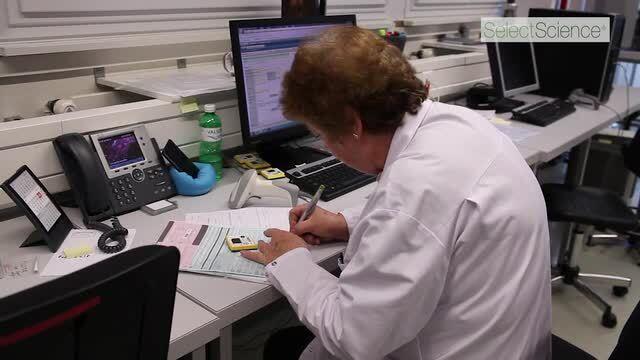Search Thermo Fisher Scientific
アスリートバイオロジカルパスポート検査

Monitor select doping biomarkers
While the approach of screening for prohibited compounds or their metabolites in an athlete’s blood or urine sample is an effective approach to monitor athletes, it has its limitations. With new, modified or designer drug substances reportedly misused by athletes, anti-doping agencies and laboratories seek new detection strategies to combat emerging threats.
Thermo Fisher Scientific has delivered leading technology for steroid analysis for more than a quarter century.
The WADA guidelines introduced a series of blood- or urine-based test modules starting in 2009, which include the Athlete Hematological Passport (blood doping) and the Athlete Steroidological Passport, a longitudinal steroid profile to detect the abuse of testosterone; i.e.endogenous steroids administered exogenously. The principle of the Athlete Biological Passport (ABP) is to monitor select biological parameters (not drugs compounds) over time, allowing agencies to generate profiles for an athlete.
生産性を改善し所有コストを削減する、ルーチン GC 分析の新しい標準を確立します。 高度なサンプル採取処理ソリューション、先進的な GC システム、高品質カラム、最新鋭のレポート機能、試薬、アクセサリからお選びください。
To ensure athletes play true, our market leading solutions help you profile athletes and confirm steroid use with precision and sensitivity expected.
多くのメリットを供与する HPLC および UHPLC を再度ご検討ください。 システム、標準/バイオ LC カラム、オートサンプラー、検出器、取り付け、ソフトウェアを含む高度な統合ソリューションにより、アプリケーションを合理化します。
固相抽出 (SPE)、固体支持液抽出 (SLE)、パック済み吸着剤によるマイクロ抽出 (MEPS)、プロセスで使用可能なマニホールドとディスペンサーをご用意しています。 シリンジフィルター、タンパク質沈殿製品、タンパク質消化物製品もご利用ください。
Confirm the presence of synthetic forms of endogenous anabolic androgenic steroids (EAAS) in urine samples.
Support in and out of competition testing with solutions to screen large sets of compounds in a single methods while staying ahead of future banned substances.
Following hydrolysis, most labs perform additional sample preparation. Thermo Fisher Scientific offers the solutions to help maximize sample clean up and improve your analytical sensitivity.
We offer a variety of configurations to suit your needs while achieving the highest level of analytical sensitivity your workflow requires to confidently identify endogenous steroid misuse.
Samples showing suspicious steroid profile parameters are isotopically characterized in order to prove the origin of steroids.

Comprehensive studies on the metabolism of therapeutic agents and drugs with misuse potential are required to identify metabolites.
Thermo Scientific™ ISQ™ シリーズ四重極 GC-MS システムの性能と高い生産性は、長年の実績によって実証されています。 Ideal for high-throughput laboratories that want to achieve uninterrupted productivity
Following hydrolysis, most labs perform additional sample preparation. Thermo Fisher Scientific offers the solutions to help maximize sample clean up and improve your analytical sensitivity.
We offer a variety of configurations to suit your needs while achieving the highest level of analytical sensitivity your workflow requires to confidently identify endogenous steroid misuse.
Samples showing suspicious steroid profile parameters are isotopically characterized in order to prove the origin of steroids.

Comprehensive studies on the metabolism of therapeutic agents and drugs with misuse potential are required to identify metabolites.
Thermo Scientific™ ISQ™ シリーズ四重極 GC-MS システムの性能と高い生産性は、長年の実績によって実証されています。 Ideal for high-throughput laboratories that want to achieve uninterrupted productivity
Removing Doubt in Forensic Science
In this eBook overview of the current state of forensic chemistry and the latest mass spectrometry technology for staying ahead of your casework, we discuss:
- Changes in regulations
- Drugged driving cases
- Polydrug use - blood alcohol, marijuana, cocaine,
- Novel psychoactive substances - cathinones, cannabinoids, fentanyl, designer drugs
Exclusive Interview with World Cup Anti-doping Director Dr. Martial Saugy, Director, LAD Take a tour of the WADA-accredited Laboratorie Suisse d’Analyse du Dopage (LAD) and learn how the team handled and tested anti-doping specimens from the 2014 FIFA World Cup in Brazil.
In this webinar Dr. Alessandro Casilli, Brazilian Laboratory for Doping Control, recent advances in high resolution accurate mass (HRAM-MS) Orbitrap technology for measuring different ionization modes during the same run, and improving specificity and detection limits in sports doping control analyses.















